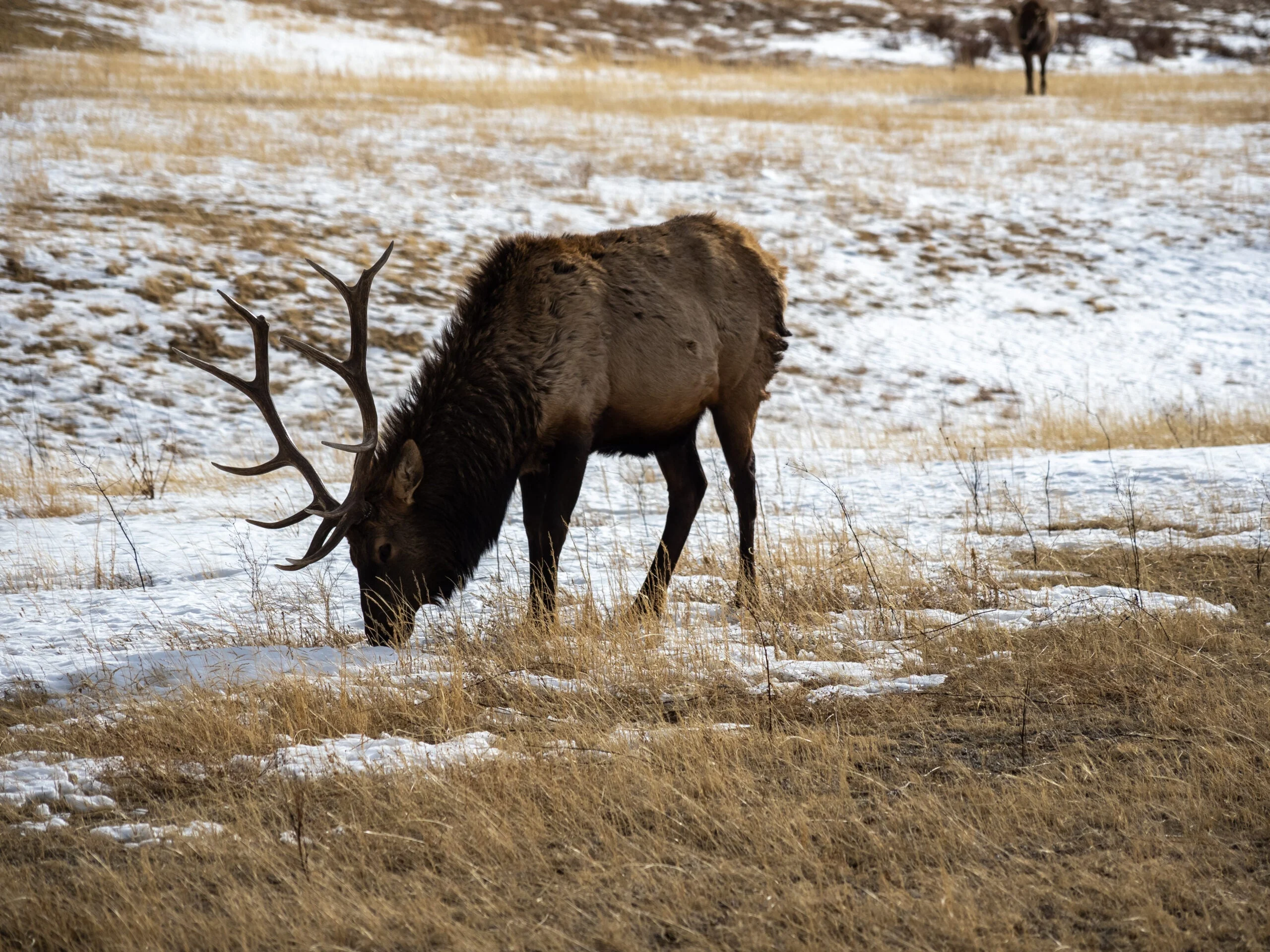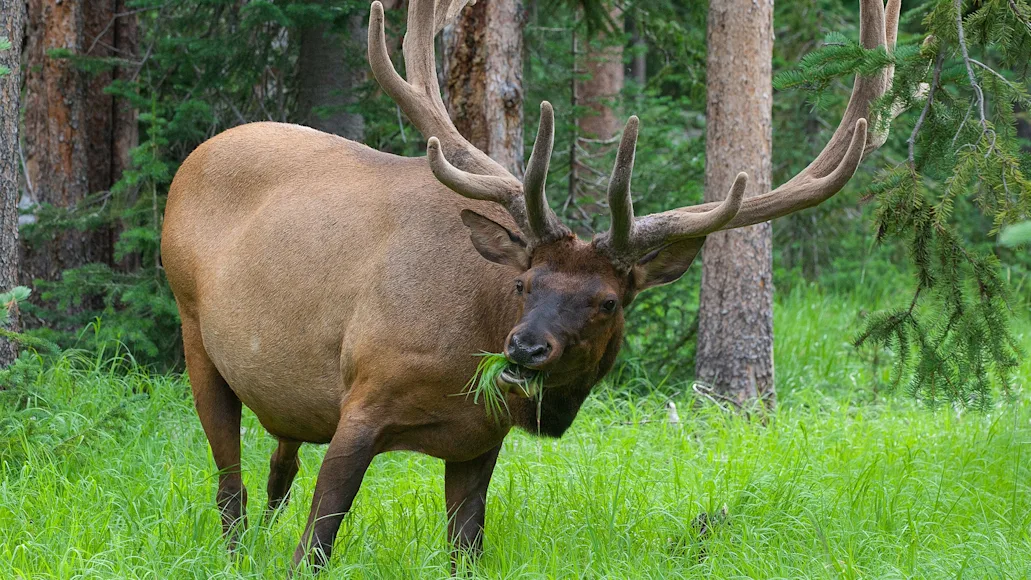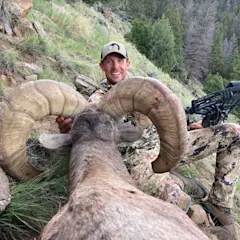What do elk eat? Well, for starters, they eat a lot. Big animals need lots of fuel, and elk are massive creatures. Mature bulls often weigh more than 700 pounds, and cows go between 500 and 600. On average, elk need to eat 3 pounds of food daily for every 100 pounds of body weight. So a bull weighing 700 pounds must consume about 23 pounds of food every day.
Elk are herbivores and considered grazers. Though they will browse, they prefer to eat grasses, forbs, and shrubs. It takes a lot of vegetation to add up to 23 pounds, which means these animals spend a fair amount of their time eating. So, when hunting elk
, knowing what food sources the animals are keying on at certain times of the year will definitely help you find a good bull and fill your tag. So, to that end, here’s your guide to the question: What do elk eat?
What Types of Foods Do Elk Eat Generally?

Though primarily grazers, elk will browse on aspens, willows, and a variety of shrubs and bushes. Sean Xu / Adobe Stock
Like any other animal, elk have specific foods they prefer, and we’ll get into those in a bit. But first, it’s essential to understand the basic food groups that elk like to consume at different times of the year and in different habitats.
Because the bulk of the U.S.’s elk population is in the Rocky Mountains
, we will start there. During early archery seasons, when the weather is fair, elk eat grasses and forbs on mountain slopes and alpine basins. Forbs are any broad-leafed plant with a high nutritional value during the growing season, and often, elk favor forbs over grasses.
By September and October, green vegetation becomes harder to find. Still, some plants like Oregon cherry and alpine forget-me-nots get a blast of sugar content after they freeze, and these, along with shrubs, can become important. As the season progresses, elk will often drop with the snow-line to find exposed grasses and forbs. During the late season, shrubs, aspen bark, and willow are prime winter food sources.
If you hunt elk primarily in the foothills, prairie, or plains, you’ll find that food is often more accessible for the animals due to a lack of snow. Standard prairie/plains food sources include willow, maple, ryegrass, bromegrasses, and agaves. Agricultural fields are also an elk favorite. Elk love alfalfa and corn fields wherever they can get to them.
The Top 10 Elk Foods

Mountain clover, aspen shoots and bark, and alfalfa all make the Top 10 list of favorite elk foods.
Right off the bat, let’s be clear that elk eat a wide array of foods that didn’t make Top 10. But that doesn’t mean they aren’t important or that you shouldn’t pay attention to them. As always, you need to be present when on the hunt. If you find a meadow full of a plant you don’t know the name of, but every stem you find is bitten off, elk are grazing there. These 10 favorites below are especially important and essential to know, but nothing trumps what you learn about an elk’s diet in your area while you’re scouting or hunting. Okay, with that caveat out of the way, here are 10 food elk really relish:
Aspen: Elk will hammer young aspen shoots, and during winter, aspen bark, which contains roughly 75 percent carbohydrates become a critical source of food.
Bitterbrush: An elk delicacy popular throughout the West, bitterbrush sports thick, nutrient-rich leaves that are small and have a hairy surface that gives the plant a dusty appearance.
Big Bluegrass: A perennial, cool-season bunch grass that can grow up to two feet tall, bluegrass is found in open ponderosa and lodgepole pine forests. When you find bluegrass, you will find elk. The grass can contain as much as 20 percent crude protein in the growing season.
Clover: Clover grows well at altitude, and when elk find it, they key on it. Mountain clover is a rich-in-protein food source that is attractive during the early season.
Wild mushrooms: Elk love wild mushrooms. Mushrooms help elk with their digestion and provide necessary nutrients.
Dandelion: An top-tier early-season food source, this forb is an elk favorite. An elk’s diet comprises between 60 and 100 percent forbs in late summer and even early fall. Find dandelions and you’ll find elk.
Sticky Geranium: A well-known mountain wildflower, this plant can be found in wooded areas, open areas, and subalpine locales.
Alpine Fleece Flower: Known as alpine knotweed or Jimson knotweed, this perennial boasts several stems and grows well in areas impacted by landslides and avalanche shoots.
Alfalfa: Alfalfa fields attract elk from miles away. Alfalfa is a protein-rich food source that elk digest well.
Willow: Willow stems are a popular food source during winter, especially when leafy food sources are rare.
Elk Eating Habits Through the Seasons

In winter, elk often move to lower elevations and key on windswept meadows where grass is exposed. Jonathan / Adobe Stock
As mentioned, elk are big eaters. During the early season, when green food sources abound and unpressured elk feel comfortable traveling long distances, they’ll search out the greenest pastures, so to speak. This is a big reason archery hunters will be on elk one day and find their honey hole to be a ghost town the next.
After the rut, elk start to change their feeding patterns. Food becomes more critical because bulls and cows are nutrient-depleted. When elk can find sanctuary with food nearby, they will often hold in areas for extended periods. They know winter is coming, and having to travel a shorter distance between isolated bedding and food means elk can keep more calories on.
During the brutal winter, most elk bailout of the high country and migrate to foothill food sources, including agriculture fields. Elk that stay in the high country—usually lone mature bulls—will find a honey hole to hide in close to a carbohydrate-rich food source.
Final Thoughts on What Elk Eat
Knowing what elk like to eat at certain times of the year will help you fill a tag whenever you happen to be hunting. But the late season is the most critical time of year to find a popular elk food source. During the late season, elk are in survival mode. If you notice a stand of aspens with its bark shredded, you need to spend some time there. By the same token, if you discover a south-facing slope with grasses not covered by snow, elk will be nearby. In the late-season, elk have a knack for finding the nutrient-rich food sources they need. So, it’s a good idea for you to know what to look for, too.
Continue Reading…
Hungry for more stories about the diets of other fish and game species? Then check out the following on our site:


